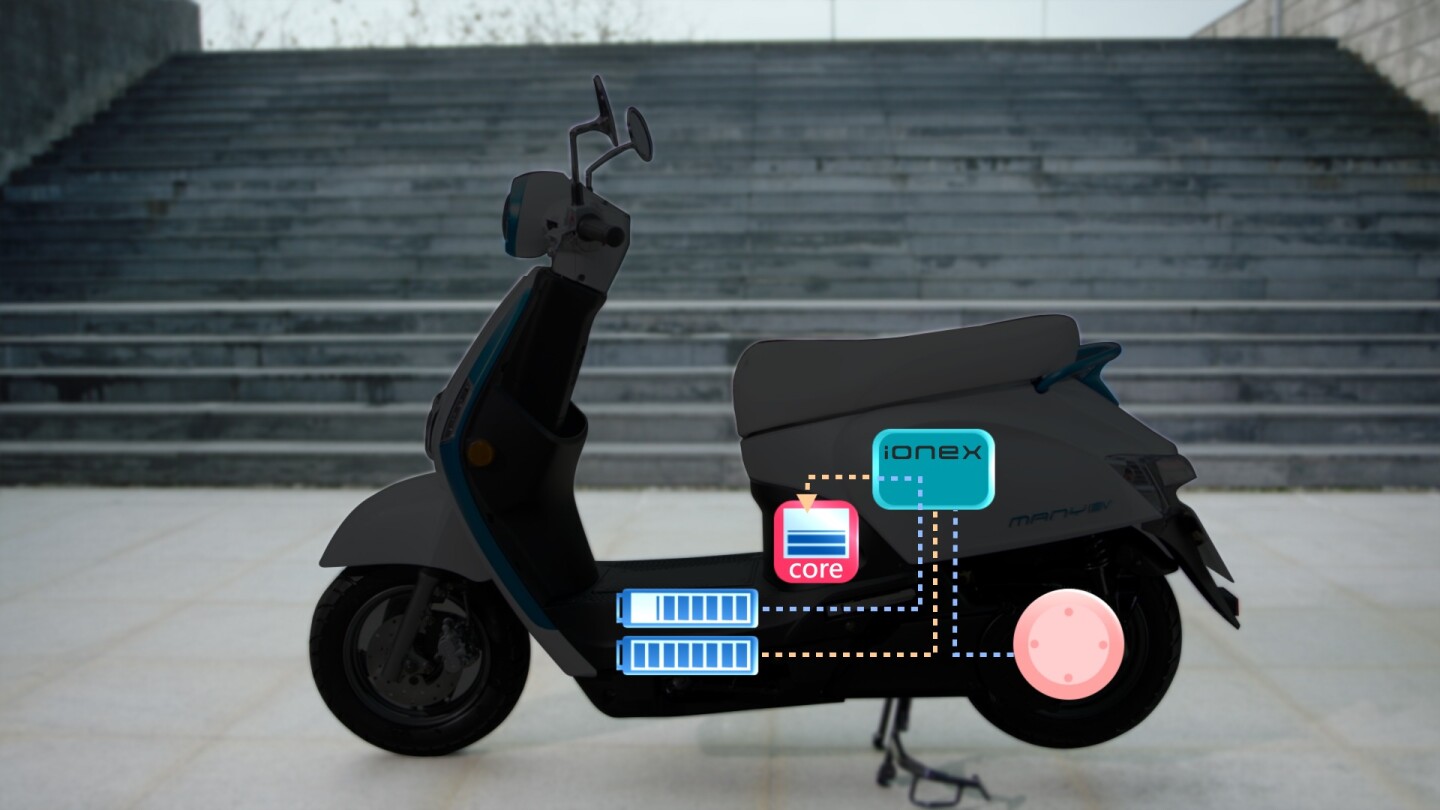KYMCO recently launched the Ionex electric scooter at the 2018 Tokyo Motorcycle Show as the spearhead of a new battery-charging strategy. The Taiwanese manufacturer proposes a power outlet network that combines typical charging stations with battery-swapping vending machines, all the while remaining open to other manufacturers.
Kwang Yang Motor Co. Ltd., or KYMCO as it is widely known, is not new to electric two-wheelers; its range includes several small commuter models for the Asian market, two of which are also marketed in Europe as well. Keeping its eyes firmly focused on future developments, KYMCO acknowledges the rising electric tide that is coming after 2020 and is designing its strategy accordingly.
"In the next three years, KYMCO plans to launch 10 electric models, establish charge networks in 20 countries, and sell over half a million electric vehicles worldwide," says Allen Ko, KYMCO Chairman. "With the Ionex, together we start an open movement that celebrates one of the most important social missions of our time."
The Ionex itself doesn't seem to offer anything radical in terms of technology, mostly based on the running gear of the popular Many 110 petrol-burning, Vespa-styled commuter. The Ionex press photos actually portray it under the name Many EV, which is probably how it will be marketed in Asian countries. KYMCO's press release makes absolutely no mention of specifications, but rather focuses on a new charging scheme.

The Ionex is powered by an electric motor at the rear wheel hub, fed by an array of batteries. There's a non-removable core battery housed under the saddle and over the swingarm pivot, as well as two slots for removable batteries under the central floorboard. These are responsible for powering the electric motor as well as charging the core unit while on the move, sustaining it as a last resort measure that will come into play once the other batteries have been depleted.
Charging can be achieved in several ways; the typical ones involve plugging the scooter directly to a power outlet, as well as fitting the removable batteries to a portable charger at home or the workplace. Then, there's the Ionex Energy Stations.
KYMCO will set up its Power Outlet Network of vending machine-like energy stations, where one can deposit the battery and have it fully charged in less than an hour. Reminiscent of battery-swapping schemes like the one proposed by Gogoro a few years ago, the Ionex Energy Stations are intended not only for KYMCO dealerships, but for practically any facility that is interested in placing it on its premises.
According to the press release, KYMCO plans to build a network extensive enough to eliminate the range anxiety that may put off potential customers from converting to electric commuters. The specs of these chargers will be open to all manufacturers, as KYMCO invites them to join in by designing their own compatible batteries. This can also include battery-swapping, giving it the potential to become what the company dubs as the world's first multi-function open energy platform.

For those that may need to cover longer distances than required by typical inner city commuting, KYMCO offers the chance to rent up to three extra batteries from any point of the outlet network and store them in the underseat compartment, extending the range of the Ionex up to 200 km (124 mi).
Unfortunately, KYMCO does not reveal any actual figures, neither for the core battery, nor for the removable ones. All we know is the aforementioned maximum range, and that each removable battery weighs less than 5 kg (11 lb). Based on this, and assuming that this maximum mileage is achieved by the combination of the core battery, another two units in the floor bay and three more under the seat, we can deduct that each battery unit is good for something in the 30-40 km (19-25 mi) range.
These numbers do not impress, especially when correlated with the current average price of an EV battery unit, which is usually anything but negligible. Still, we'll reserve judgement until KYMCO reveals the exact specs of the Ionex, as well as important information such as the battery kit that comes as standard, and related costs for charging, renting and buying batteries.

In view of the relative void in charging infrastructures in most countries, KYMCO also addresses policy makers in its press release, in an apparent effort to attract public services' scooter fleets to its network and, most importantly, set a global standard.
Although a similar charging network has already been proposed, it is KYMCO's size that could make the difference. With presence in markets all over the world, its dealership network alone makes for a valid starting point. Assisted by the open character of this platform, attracting more manufacturers to join in would fuel a more rapid expansion. The possibilities are limitless, from gas stations, shopping malls and parking lots, to office buildings and even standalone Ionex Energy Stations in public areas.
KYMCO has not disclosed when the Ionex is expected to hit showrooms, but during his speech at the launch event, Allen Ko revealed that the development of the power outlet network is scheduled to start in Taiwan sometime in the second half of 2018.
Take a closer look at the Ionex in the following official video.
Source: KYMCO



















